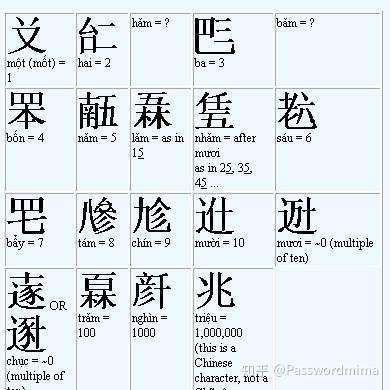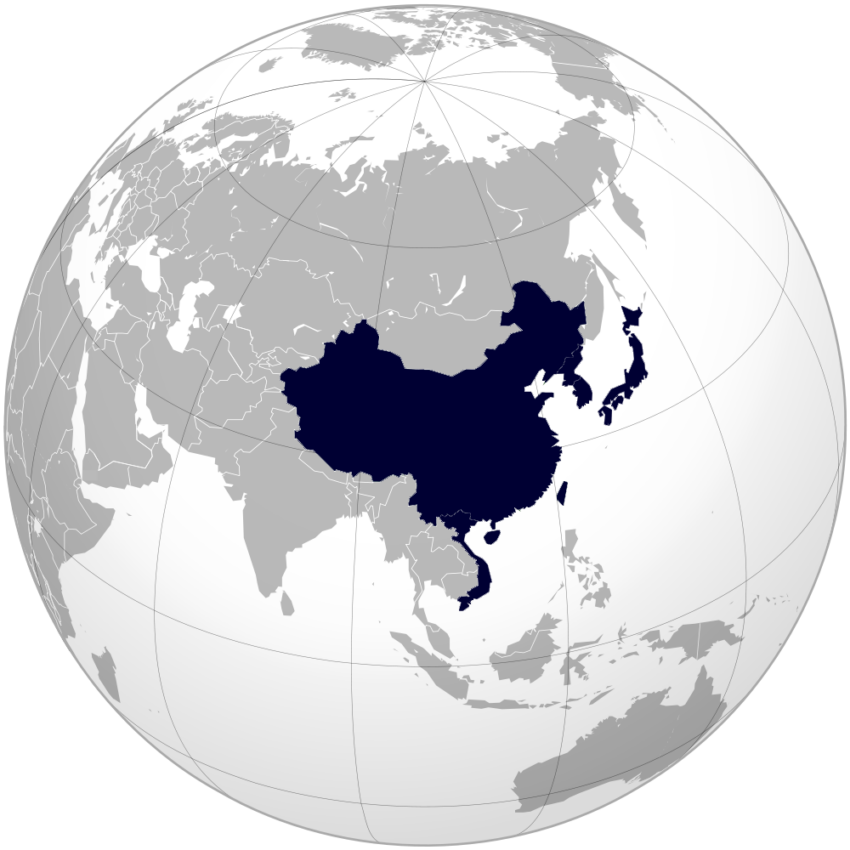I think that the inherent words before the incoming Chinese characters are mainly monosyllics, consonants, perhaps Vietnamese, and now the ancient languages of the ancient regime in China, as well as the reason why a large number of Chinese-Tibetan, Miao-Yi, Zhuang-Thai minorities in China have abandoned the use of Latin alphabets.
Most Chinese characters have both esoteric meaning and the syllable part of the alphabet, which together serve as the side-side head of the Chinese character, both the voice and the esoteric part. Because monosyllables, polysonants are the main, so these cultures ancient by the influence of Han culture, more faithful to the characteristics of Chinese characters, shaped phonetic characters, resulting in a very complex structure, learning difficult, and Chinese characters can not be universal. In Vietnamese, for example, the number 123456789 should be written in such a way as to express both the tone and the meaning. Block strong characters, Xixia text, etc. are similar.

And Japan because of the inherent word polysyllable words, has abandoned the treatment, directly with Chinese characters corresponding to a pronunciation of an unrelated inherent word. For example: 山(Yama)、島(Sima)、空(Sora)、櫻(Sakura)、淚(Namida)、雫(Sizuku), Apart from 畑(Hata)which are both onic and expressive, most of the newly created and made Chinese characters after the Chinese characters were passed into Japan are also made according to the logic of the Chinese language and the Chinese characters, and few chinese characters are created directly to express the inherent pronunciation. Instead, this kind of abandonment reduces the cost of Chinese character education and writing, and multisyllal syllics are expressed in one Chinese character, which also reduces the length of writing.
Japanese is a rare and unique way of abandoning therapy in the history of world writing.
When East Smit Akkad learns Sumil’s cuneiform text, although it is also in accordance with Sumir’s pattern of both the side of the table tone and the side of the expression, but directly quoting the original word of Sumil to express the inherent words, basically limited to sacred areas such as religion, such as (meter) shaped characters corresponding to the inherent word El, to represent God. Most words are new words that correspond to the natural word sound according to the logic of the cuneiform text. Later, the South Caucasian, West Smit, ancient Iranian Hurris, Assyria, Persia, Ugarit cuneiform characters, but also less and less edification, and finally become pure esoteric text.
When the Sissamite borrowed from ancient Egyptian, it basically borrowed only mics, which formed the original Canaan-Ancient Hebrew text, and later formed almost all the phonetic letters in the world except the Japanese pseudonym and the Yi language.

The Mayan script is similar, and the religious classes of the late Mayan culture (which are the same language as the early Mayan culture, but speak different languages, similar to the difference between Chinese Tibetan) basically learn the early Mayan characters as a second language and do not correspond the early Mayans with expressive structure to the inherent words, rather than the religious class using only the Mayan numbers and the early Mayan diastograms derived from the 50-style pure phonetic text.
This may be because the ancient Chinese words are monosyllable, multi-consonant dectonics plus tail rhymes, tone-based, and Japanese is multi-syllables as the main sticky structure is also independent syllables. Sumil to Sammite, Farsi, ancient Egyptian to Canaan-Hebrew, old and new Mayan, lending and borrowing are polysyllics are mainly, and the number of syllables between inherent words of the same meaning is often different, and the in-word bending, or sticking structure is not complete syllables need to occupy the end syllables. As a result, they did not “abandon therapy” like Japanese by using borrowed words directly to correspond to inherent words that had nothing to do with pronunciation.
As for Korean (Korean), because it is more influenced by Chinese culture, the doctor’s class copy Chinese in its entire right, and largely uses Chinese as a second mother tongue, rather than creating a mixed culture of Chinese characters and native languages. Politically, it is also a centralized model, with resources concentrated in the capitals.
In less educated villages, urban civilian classes, and areas far from the capital city, most people who do not know Chinese speak only Korean (Korean), which highly retains the native inherent vocabulary, and Chinese words have a large number of phonetic words, and the corresponding inherent words can distinguish these phonetic Chinese characters. And the inherent words are mainly two syllics, multi-syllic words less, and will not be too long, so it will not lead to the inconvenience of writing in Yanwen.
This also laid the foundation for the abolition of the daily use of Chinese characters in the post-war education of all the north and south, the north mainly through policies, while the south is based on newspapers and other use of natural decline, the north and south are currently in the middle school stage to retain Chinese character education, but out of the law, religion and a few other professional areas, has rarely needed to use Chinese characters.
And Japan because of the rapid feudalism of the War Years, the urban poor class also used a large number of words, because Japanese has abandoned therapy, Chinese characters have been highly corresponding to the inherent words, a single Chinese character naturally became the most convenient way to record a multisysmonic word. In this process, with the simplification of the phonetic system with the chinese and ancient Chinese, not only the original pronunciation of different Chinese characters merged into the same tone, a large number of inherent words also merged into the same tone, each other can only be distinguished by Chinese characters. Because this phenomenon of synths, which can only be distinguished by Chinese characters, has been deeply rooted in the field of inherent words, Japanese has become highly dependent on Chinese characters, it is difficult to replace other writing systems.
